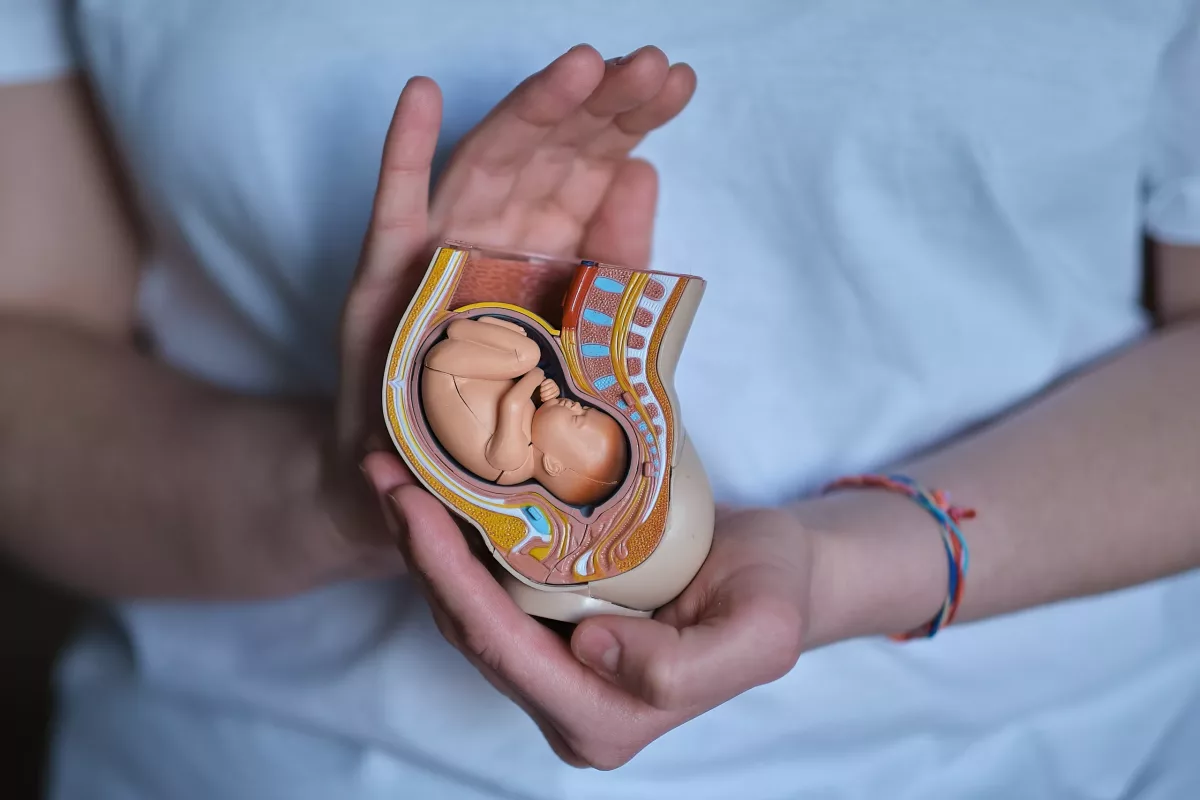A rare condition that causes the outside genitals of an infant to appear abnormal is called atypical genitalia (previously called ambiguous genitalia). The abnormal appearance of the genitalia makes it difficult to understand the sex of the baby (male or female). This condition appears differently among infants. For example, the genitals may not be fully developed, look different from what is expected, or a baby may have features of both sexes. Moreover, the outside genitalia may not match the sex organs on the inside or the genetic sex that is determined by sex chromosomes. For example, normally, XX for females and XY for males.
Generally, external genitals are sex organs located on the outside of the body. For example the opening of the vagina, labia, clitoris, penis, and scrotum. However, the organs located inside the body are called internal genitals and include the following ones. Examples include the fallopian tubes, vagina, uterus, ovaries, prostate, and testicles. Primarily, sex hormones are produced by the ovaries and testicles (also known as gonads). The only way to identify genetic sex is through sex chromosomes. In normal circumstances, sex chromosomes are a genetic female with 2 X chromosomes, and a genetic male with one X and one Y chromosome.
This condition is not considered a disease but a difference in sex development that is often noticed shortly after birth. To treat this condition, people often need a healthcare team. They help guide decisions about the baby’s sex and treatment.
Symptoms
In most cases, doctors identify this condition after birth. Sometimes, doctors may suspect this condition during pregnancy. Usually, atypical genitalia appear differently among babies because they depend on the hormone changes during pregnancy and the genital development of the fetus. However, infants who are genetically female (meaning they have two X chromosomes) may have:
- An enlarged clitoris as it looks like a penis
- Lumps that feel like testicles
- Closed labia or labia that include folds and look similar to a scrotum
Those who are genetically male (meaning they have one X and one Y chromosome) may have:
- Small penis and urethral opening very close to the scrotum
- Missing one or both testicles
- Testicles may remain in the body (also known as undescended testicles)
- A condition in which the tube that carries urine and semen is narrowed (the urethra). In other words, this tube does not extend fully to the tip of the penis. If the urethra opening is located on the underside of the penis, it is called hypospadias.
Causes
This condition often appears due to hormonal changes that occur during pregnancy (before birth).
How are Sex Organs Formed in the Womb?
The genetic sex of an infant is set at conception, based on the sex chromosomes. The process in which the egg from one parent meets the sperm from the other parent is called conception. Normally, the egg contains one X chromosome, and the sperm contains either one X or Y chromosome. When a baby gets an X chromosome from the sperm, it is considered a genetic female, and when a Y chromosome, it is considered a genetic male.
However, the sex organs develop from the same tissue in males and females. To understand when this tissue becomes male or female organs, it is important to know that it depends on sex chromosomes and the presence or absence of hormones called androgens. These hormones are responsible for the development of male genitals. For example:
- When a fetus gets a Y chromosome, it triggers the development of testicles that produce androgens.
- However, when a fetus receives an X chromosome, the androgen effects are missing, and the genitals develop as female.
In some cases, chromosomal changes may make it difficult to determine the genetic sex.
Atypical Genitalia
If a change in the steps that affect fetal sex development occurs, it may cause a mismatch between the baby’s external and internal genital appearance.
- Atypical genitalia may occur in a genetic male fetus that does not produce enough hormones (androgens).
- There are some genes that affect fetal sex development and may also cause atypical genitalia.
- Some babies may develop atypical genitalia due to rare or complex syndromes that negatively affect many organs. For example, chromosome changes (such as missing sex chromosomes or an extra one) and others.
In any case, doctors are not able to determine the exact cause of atypical genitalia every time.
Possible Causes in Females
These include:
- Congenital adrenal hyperplasia – There are some types of this genetic condition that may cause adrenal glands to produce fewer hormones (androgens).
- Exposure to some hormones during pregnancy – Certain medications contain androgens, and if these medicines are taken during pregnancy, they may cause this condition. However, other hormones may also contribute to atypical genitalia.
- Tumors – In rare cases, a tumor in a pregnant woman may cause hormonal imbalances that affect the development of male genitals.
Possible Causes in Males
- Unusual development of the testicles – It often happens due to genetic mutations or due to unknown causes.
- Androgen insensitivity syndrome – In people with this condition, the development of the genital tissue does not respond properly to hormones produced by the testicles.
- Problems with the Testosterone or testicles – There are a lot of problems that may impact the activity of the testicles. For example, abnormal structure of the testicles, reduced Testosterone production, problems with some proteins in cells that respond to Testosterone, and others.
- 5-alpha reductase deficiency – This is an enzyme that helps produce hormones that cause the development of the male genitals. Any problem with this enzyme may play a role in atypical genitalia.
Risk Factors
Family history is the biggest risk factor for atypical genitalia because there are multiple differences in sex development caused by genes that often run in families and may be passed from biological parents to their children. A family history of the following conditions may also increase the risk of developing atypical genitalia. Examples include:
- Infertility
- Atypical genitalia or atypical physical development during puberty
- Congenital adrenal hyperplasia (a group of genetic disorders that impact the adrenal glands)
Discuss with your healthcare professional before pregnancy if you have a family history of previous risk factors.
Complications
People with atypical genitalia may also experience some complications. For example:
- Infertility – In most cases, people with this condition cannot have children. Consult with your healthcare professional about ways to treat infertility.
- Increased risk of certain types of cancer – Atypical genitalia is linked with an increased risk of cancer.
Diagnosis
Usually, this condition is diagnosed during delivery or soon after birth. Sometimes, doctors may suspect this condition during pregnancy due to the results of blood tests of the fetus. In general, this condition is diagnosed after birth.
Healthcare providers may perform additional tests to determine the exact cause of atypical genitalia. Check below some examples:
- Blood tests to measure hormone levels and look at chromosomes. Normally, these tests show genetic sex typically XX (female) and XY (male).
- Ultrasound of the pelvic and abdominal (belly) area
- X-ray studies that involve a contrast dye
In some cases, doctors may perform surgery to collect a small sample of tissue from the fetus’s reproductive organs. Thus, this sample is sent to the laboratory for testing.
Treatment
The treatment goal is long-term mental health, social well-being, and fertility. The treatment often begins differently among babies with atypical genitalia. In most cases, treatment of atypical genitalia involves multiple healthcare professionals. For example:
- Pediatricians
- Neonatologists (experts in newborns born too early or with certain health conditions)
- Pediatric urologists
- Pediatric general surgeons
- Medical geneticists
- Mental health professionals (including psychologists or social workers)
Medications
Doctors may recommend some hormone medicines to correct or treat hormonal imbalances. For instance, physicians may recommend hormone replacement therapy in genetic females with a slightly enlarged clitoris caused by mild congenital adrenal hyperplasia. Moreover, it may be the only treatment needed.
Surgery
This treatment is often recommended by doctors for children with atypical genitalia to maintain healthy sexual function and make their genitals look more typical.
While in most cases results of surgery are satisfying, it may lead to certain problems, including a disappointing appearance or problems with sexual function (including anorgasmia).
Frequently Asked Questions
What is atypical genitalia?
This is a rare health condition often caused by hormonal imbalances that occur during pregnancy. It causes an abnormal appearance of the outside genitals, which may make it difficult to determine whether male or female.
How do you treat atypical genitalia?
Usually, treatment involves hormone therapy and surgery to correct the appearance of the outer sex organs.
What is the most common cause of atypical genitalia?
Healthcare professionals determined that congenital adrenal hyperplasia (CAH) is the most common cause of atypical genitalia. In babies with CAH, adrenal glands produce too many androgen hormones. Ask your healthcare provider if you have additional questions.




